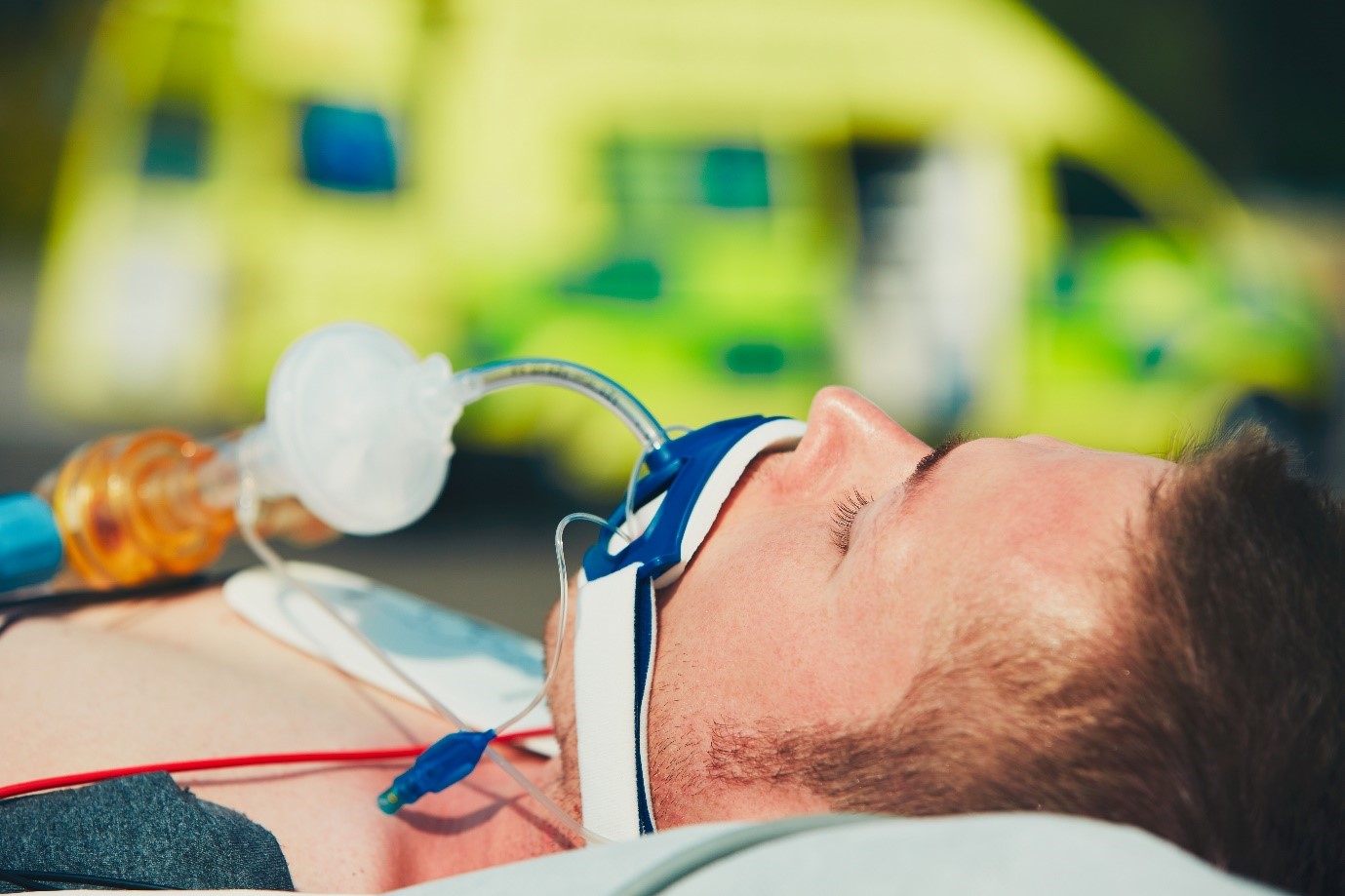Airway part 1
A partially or fully occluded airway will reduce/deplete airflow into and out of the lungs, reducing or halting any gaseous exchange. Following a reduction/halting of gaseous exchange, the body will quickly become hypoxic and hypercapnic as it uses up its remaining oxygen within the blood and carbon dioxide cannot be removed through respiration. Tissues will start to work in an anaerobic state due to lack of oxygen, causing further pathological detriment and acidosis.
Hypoxia effect on the body:
If there is a fully occluded airway with no oxygen supply, depending on the health and age of the patient, brain cell damage can begin from 1-2 minutes. At around 3-5 minutes brain cells begin to die, and from 10 minutes, significant brain damage occurs, and the chances of patient survival are low. Within the brain, neurons are affected first, followed by the neuroglial cells. Within the body, mass cellular death occurs throughout with increasing acidosis and hypoxia/anoxia, homeostatic balances are significantly disrupted, major organs begin to fail, and cardiac arrest follows.
If there is a partially occluded airway with some oxygen supply and carbon dioxide expulsion, then the pathophysiological processes leading to cardiac arrest will be extended depending on the airway severity.
Stepwise airway management:
For a clinician to manage the airway in an unconscious patient, the stepwise airway management approach is considered an effective and logical process . The stepwise approach follows a range of interventions from basic manoeuvres and suction, all the way through to enhanced airway practice. This approach can be used as a sliding scale, advancing up the steps to provide a patent airway where the others have failed. The clinician can also move down the steps if they feel the manoeuvre is too difficult or are unable to obtain a patent airway with the more advanced skill. For example, being unable to intubate due to difficult anatomical structures and returning to a Supraglottic Airway (SGA) device.
Working through the flow of the stepwise airway approach;
- Starting at the beginning, look within the airway and remove any visible obstructions/fluids. If C-spine is not considered or immediate lifesaving treatment is required, then patient positioning can be used to allow vomit or secretions to flow from the airway. If the obstruction/fluid is difficult to remove, or you are maintaining C-spine immobilisation, suction and/or forceps can be utilised. The clinician can also use a laryngoscope to observe any further objects requiring removal.
- Following the removal of any obstructions, the next manoeuvres include the ‘head-tilt chin-lift’ if there are no C-spine concerns, or the ‘jaw-thrust’ if there are C-spine concerns. Both manoeuvres allow for an opening of the airway, can help remove tongue obstruction, and can help maintain airway patency.
- Next are the Oropharyngeal and Nasopharyngeal Airways (OPA NPA). A correctly sized OPA can help maintain airway patency and keep the tongue in a normal position. If there is an element where an OPA cannot be inserted, e.g., where a patient has trismus, then an NPA can allow some airway patency via the nasopharyngeal route.
- An SGA device can be used as a further step, sitting directly above the glottic opening, and providing some protection to the airway from vomit or secretions. There are variations of SGA devices, but they are considered simple in application and can provide an effective airway maintenance. An SGA is often the limit of airway clinical scope for Ambulance clinicians up to Emergency Medical Technician level. Variations may present within different trusts/organisations, and it’s important to review your airway policies to ensure you work within your scope of practice.
- An Endotracheal Tube (ETT) and Endotracheal Intubation (ETI) provide a secure airway directly within the trachea. When in place, the tube has an inflatable cuff which secures the airway from liquids/substances entering the lungs. ETI is considered difficult to practice and maintain within the pre-hospital setting, and some Ambulance Services within the UK have removed this skill from their Paramedic skill set.
- If an airway is fully occluded with no resolve from working through the stepwise airway approach, then a cricothyroidotomy airway can be used as a final step within the Paramedic skill set. This involves inserting a small airway tube directly into the trachea through the cricothyroid membrane. Different Ambulance Services have different cricothyroidotomy devices which are packaged pre-built to allow for ease of performing the procedure and reducing delay. A cricothyroidotomy is often the limit of airway clinical scope for Paramedics. Variations may present within different trusts/organisations, and it’s important to review your airway policies to ensure you work within your scope of practice.
- If the following stepwise airways fail, or you reach the maximum of your clinical scope of practice, then further advanced clinical care will be required, and/or rapid transport to hospital while continuing to manage as best you can.
